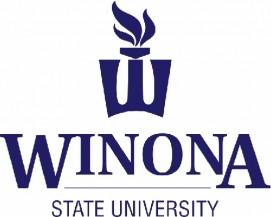Winona State University

Winona State University (WSU) is a public institution that was founded in 1858. It has a total undergraduate enrollment of 7,228, its setting is city, and the campus size is 125 acres. It utilizes a semester-based academic calendar. The enrolled student population at WSU is 87% White, 3% Hispanic/Latino, 3% International, 2% Black, 2% Asian, 2% Multiracial, and 1% Race Unknown. There are about 65% identified female students and 35% identified male students. 65% of students are from Minnesota.
Engagement Summary
Winona took initiatives to have a welcoming and inclusive environment for the mental well-being of students of color on campus. They had staff and programs on campus that prioritized the needs of students of color. These included the Associate Vice President, Inclusion and Diversity or CDO, the staff in the Multicultural Research Center, the International Student Center, and the members of the TRIO programs. WSU supported students of color through the KEAP Council, which consisted of leaders from diverse student groups.
Although there wasn’t a policy ensuring diversity in the hiring process, WSU clearly made an effort to diversify their faculty and staff. This was observed through postings and advertising of open positions in publications, websites, and professionals of color. Training materials were provided to the search committee and interview teams to combat unconscious bias. Affinity groups were present on campus for faculty and staff of color that provided a sense of community.
There were also programs that encouraged dialogue on national and international issues and events, and there were programs to educate, engage and promote leadership centered around social justice matters and intergroup relations.
To improve upon this already positive and healthy campus setting for students of color, it was recommended that WSU made a proactive effort in creating a welcoming environment for incoming students to feel a sense of community and belonging interculturally and with white students.
Another recommendation was for recruitment efforts to be examined with the Admission office to ensure that the message of recruitment aligned with actual experiences with students of color.
The third recommendation was to collaborate with partners from different offices within the campus in order to distribute multicultural competence and unconscious bias training to faculty and staff.
The fourth recommendation was for WSU to work with their diversity and inclusion staff to arrange faculty and student groups, ensuring that programming is responsive to current events with the best possible support to identity focused student groups.
The final recommendation was for WSU to better utilize technology to best provide a sense of connection among students of color and to advertise programs and events for all students.
Midterm Evaluation Progress-to-Goal Snapshot
WSU had a goal to hold dialogue based on the results of the Campus Climate Study to explore one way of addressing civility and respect within the department, to have the Gender Based Violence Prevention unit to hold dialogue on the experiences of non-white college students, to hold a WSU Kindness Week during the last week of classes to address civility and respect, and to tie in goals and initiatives from the Jed Strategic Plan to the Inclusion and Diversity Strategic Plan. This would lead to discussions of equity and inclusion in every step taken to navigate Jed campus work.
Highlights include:
- The Department of Integrated Wellness worked with the Rainbow Unity Alliance, the Full Spectrum Club, and multiple affinity groups to find more inclusive literature to provide to The Well, which is the student wellness meeting, gathering and study area. The books added to The Well contained subject matter that was non-White, non-heteronormative, and characterized by many other experiences of marginalized identities.
- The campus climate study exposed a civility issue present on campus, and this was addressed with a Kindness Week that also acknowledged budget cuts, layoffs, and program cuts.
- A healthy masculinity discussion was held by a panel of diverse and respected male leaders on campus and within the community.
- Winona is looking to hold a bystander intervention program and to train students to do training themselves.
- Kindness Week was characterized by positive activities such as relaying kind messages and and acknowledgment of resilience.
- Another Kindness Week was set to take place in April of 2020 to be paired with inclusion activities.
- Student-led ally training was developed, and Kate asked specific questions on how being a student of color is defined. This was then connected to the EMHF.


